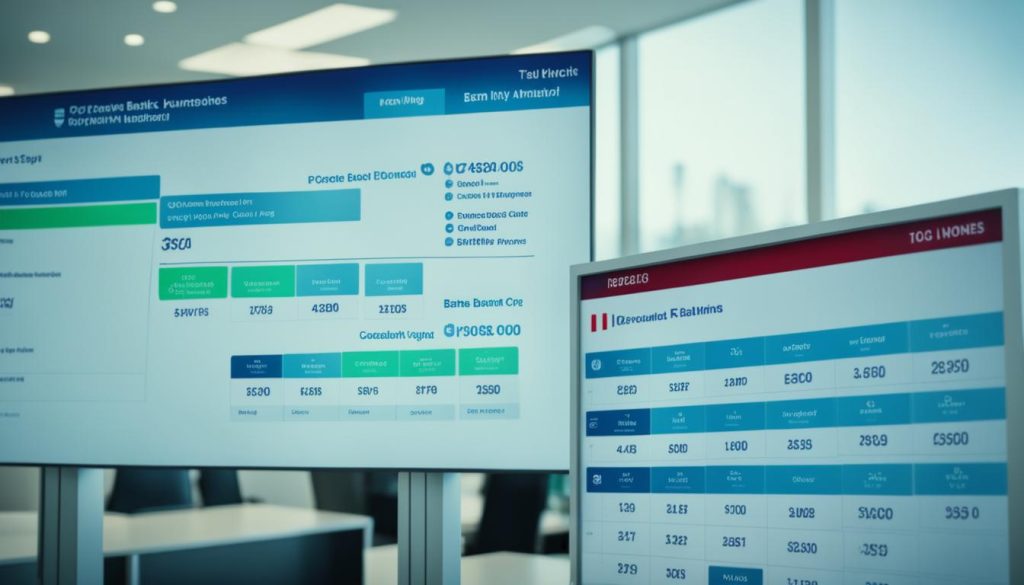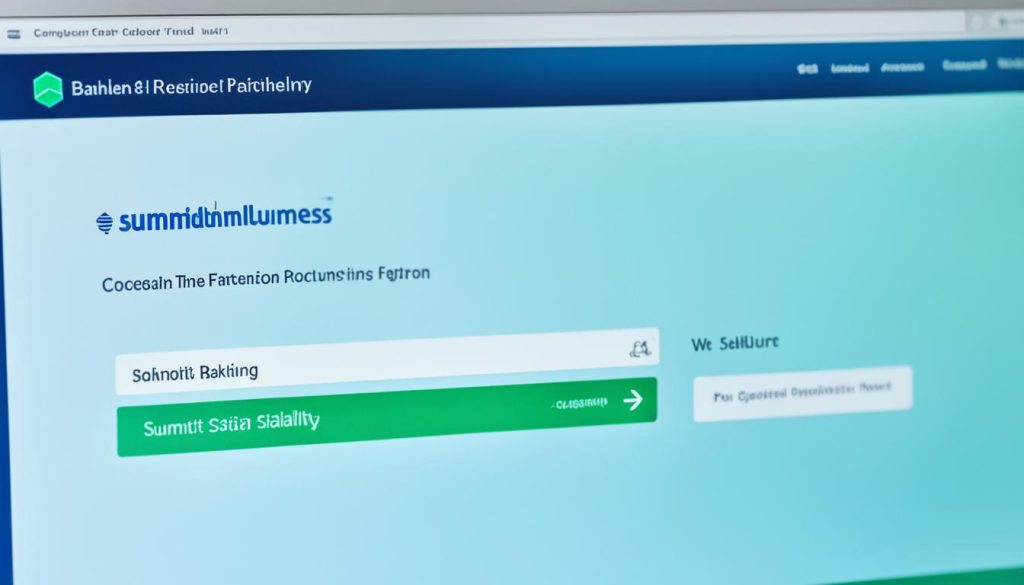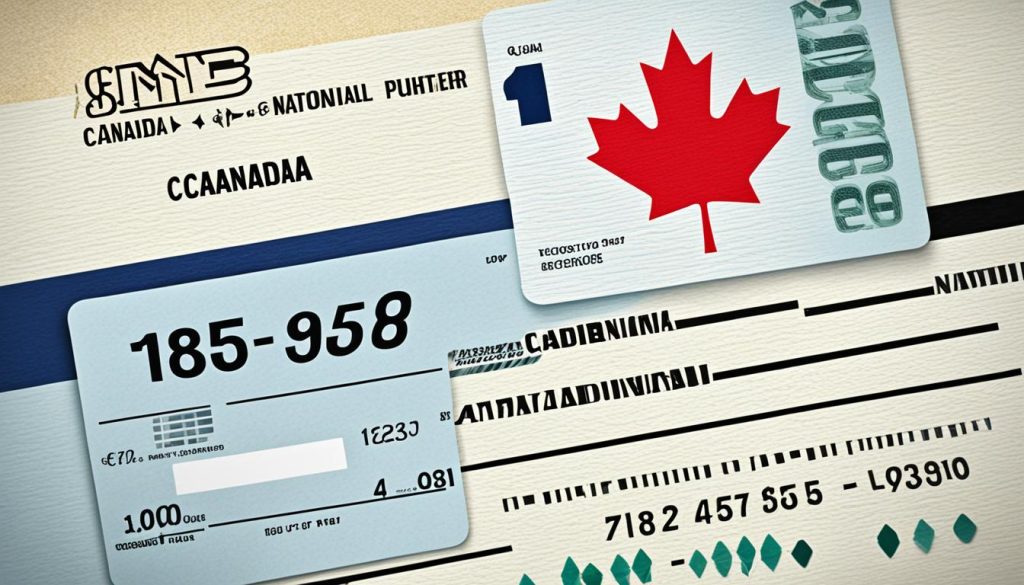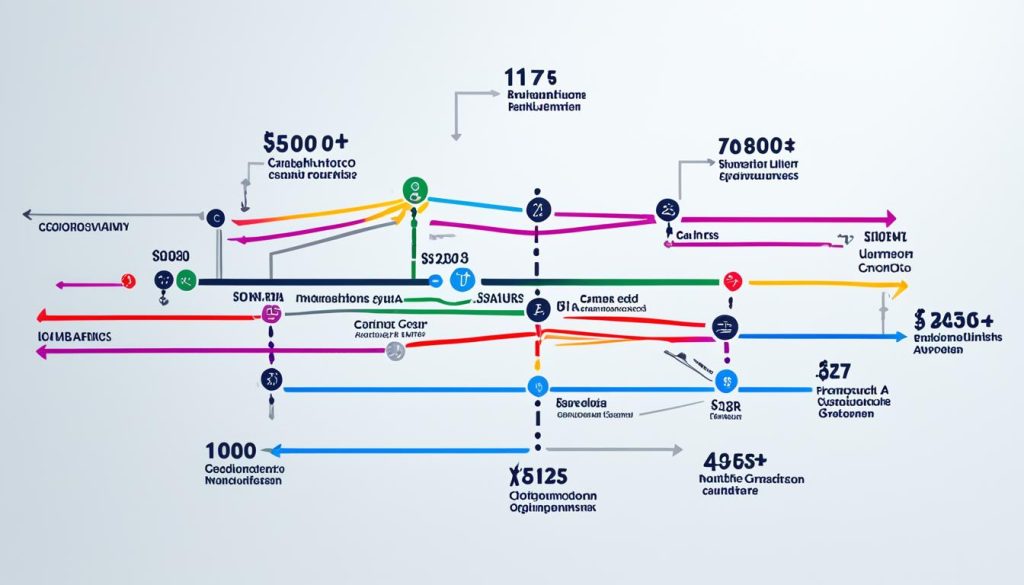Are you new to banking in Canada and have come across the term “routing number”? Or maybe you’ve been a long-time customer and have yet to bother and just never bothered to understand what it is. Regardless of your situation, you’re not alone in your confusion. Many individuals need clarification on what is routing number and how it relates to their bank accounts. But fear not because, in this article, we will provide you with a comprehensive guide to understanding routing numbers in Canada. We will answer questions like, “How do I find my routing number in Canada?” and “What is my TD Bank routing number Canada?” So, if you’ve ever wondered about how to find your routing number, read on to uncover this financial mystery.
Introduction to Routing Numbers in Canada
A routing number is a combination of a five-digit transit number (also called a branch number) and a three-digit financial institution number that identifies the specific bank branch where an individual holds an account. Routing numbers are used by Canadian banks, credit unions, and other financial institutions to facilitate and track electronic financial transactions such as direct deposits, money transfers, online bill payments, and more.
Defining Routing Numbers
The transit number, or branch number, identifies the specific branch where the account was opened, while the financial institution number represents the bank itself. Together, these two components make up the complete routing number that is essential for accurately directing and processing various financial transactions.
Importance of Routing Numbers for Financial Transactions
Routing numbers ensure that funds are directed to the correct bank account, making the processing of electronic financial transactions efficient and secure. Whether you’re setting up a direct deposit, sending a money transfer, or making an online bill payment, having the right routing number is crucial for the successful and timely completion of these transactions.
Components of a Canadian Routing Number
A Canadian routing number consists of two key components that work together to identify specific financial institutions and bank branches. Understanding the structure of these numbers is crucial for accurately completing various financial transactions, from cheque processing to electronic fund transfers.
1. Institution Number
The three-digit institution number is the first part of a routing number, and it serves to identify the specific bank or financial institution. This number is assigned by the Canadian Payments Association and is unique to each bank. For example, the institution number for the Bank of Montreal (BMO) is 001, while the Royal Bank of Canada (RBC) has an institution number of 003. Knowing the institution number is essential when providing your complete routing number information.
2. Transit or Branch Number
The second component of a Canadian routing number is the five-digit transit or branch number. This number identifies the specific branch of the financial institution where the account was opened. The transit number can provide geographic information, as the final digit often corresponds to a particular region or province. For electronic fund transfers, the routing number is presented in a numeric format without dashes (e.g., 0YYYXXXXX). However, on cheques and other paper documents, the routing number is typically displayed in an eight-digit format with a dash separating the institution and transit numbers (e.g., XXXXX-YYY).

Major Canadian Banks and Their Institution Numbers
When it comes to banking in Canada, the major financial institutions, often referred to as the “Big Five”, each have their own unique institution numbers that are an integral part of the complete routing number. Understanding these institution numbers is crucial for Canadian bank customers as they navigate various financial transactions, from setting up direct deposits to making online bill payments.
The institution numbers for the major Canadian banks are as follows:
- Bank of Montreal/BMO: 001
- Bank of Nova Scotia/Scotiabank: 002
- Royal Bank of Canada/RBC: 003
- Toronto-Dominion Bank/TD Bank: 004
- Canadian Imperial Bank of Commerce: 006
Knowing the specific institution number for your bank is an important step in correctly identifying and using your complete routing number, which is composed of both the institution number and the transit or branch number. This information is essential for ensuring the efficient and secure processing of canadian bank routing numbers, canada bank routing codes, and canada bank transit numbers for a variety of financial transactions.
What is Routing Number in Canada for Banks?
The routing number in Canada for banks is a combination of the five-digit transit or branch number and the three-digit institution number. The transit number identifies the specific branch where the account was opened, while the institution number represents the bank itself. This routing number information is essential for accurately directing and tracking electronic financial transactions such as direct deposits, money transfers, and online bill payments. Having the correct banking routing number canada ensures that funds are properly routed to the right bank account.
1. Identifying Specific Bank Branches
The transit number, which is the five-digit portion of the routing number, helps to identify the specific branch where the account was opened. This level of detail is crucial for ensuring that electronic transactions are directed to the correct location, facilitating efficient and secure processing of canadian bank transit numbers.
2. Facilitating Electronic Transactions
The complete routing number, comprising both the transit and institution numbers, is essential for the successful completion of a wide range of electronic financial transactions. Whether you are setting up routing transit number lookup canada for direct deposits, transferring money, or paying bills online, providing the accurate routing number is necessary to ensure the prompt and accurate processing of these transactions.

Finding Your Routing Number
Discovering your Canadian routing number is a straightforward process. There are several reliable methods to obtain this important financial information:
1. Checking Your Bank Statement or Cheque
The easiest way to find your routing number is by examining your bank statement or personal cheque. The routing number is typically printed at the bottom, with the transit number and institution number separated by a dash.
2. Accessing Online Banking Portals
Many Canadian banks now provide the routing number information directly on their online banking platforms. You can typically find the routing number details in the account information section of your digital banking profile.
3. Contacting Your Bank Branch
If you are unable to locate your routing number through your statements or online banking, you can simply contact your bank branch directly. The staff will be able to provide you with the find bank routing number canada, transit routing number canada, routing number meaning canada, and how to find routing number canadian bank that you need.
Knowing your accurate routing number is crucial for setting up direct deposits, money transfers, and other important financial transactions in Canada.
Using Routing Numbers for Different Transactions
Routing numbers in Canada are an essential part of various financial transactions. These unique identifiers play a crucial role in ensuring the smooth processing of payments and transfers, allowing funds to be directed to the correct bank accounts.
1. Setting Up Direct Deposits
When starting a new job, you will need to provide your routing number and account number so your employer can set up direct deposit of your paycheque. This ensures your earnings are automatically credited to the appropriate bank branch and financial institution associated with your account.
2. Sending or Receiving Money Transfers
Whether you’re transferring funds domestically or internationally, the recipient’s routing number is required to guarantee the money reaches the correct canada bank transit numbers. This level of accuracy is essential for the successful completion of these types of electronic transactions.
3. Making Online Bill Payments
When paying bills electronically, you may need to enter your banking routing number canada to authorize the payment from your bank account. Providing the correct bank branch identifiers ensures the timely processing of your online bill payments.
Ensuring the accuracy of your routing number canada is crucial for the smooth processing of these types of financial transactions. Taking the time to verify this information can help avoid delays, failed payments, or funds being directed to the wrong account.

Regional Variations in Transit Number Designations
While the Big Five Canadian banks have branches across the country, the five-digit transit routing number Canada often reflect the geographic region of the branch. The fifth and final digit in the transit number can indicate the following regions:
- 0 for British Columbia and Yukon
- 1 for Western Quebec, including Montreal
- 2 for most of Ontario, including Southern Ontario and Toronto
- 3 for Nova Scotia and Prince Edward Island, sometimes Newfoundland and Labrador
- 4 for New Brunswick
- 5 for Eastern Quebec, including Quebec City
- 6 for the Ottawa region
- 7 for Manitoba and Northwestern Ontario
- 8 for Saskatchewan
- 9 for Alberta, Nunavut, and the Northwest Territories
This regional designation can help identify the specific branch associated with a find bank routing number Canada.
Importance of Accuracy in Routing Numbers
Accuracy is critical when it comes to routing numbers in Canada. Incorrectly entering a routing number can lead to delays, failed transactions, or funds being directed to the wrong account. It’s important to double-check the routing number, including the institution number and transit number, when providing this information for any financial transactions. Verifying the routing number with your bank or the recipient can help ensure the successful and timely processing of direct deposits, money transfers, bill payments, and other electronic fund transfers.
The routing number meaning canada is crucial for ensuring the accurate identification of your bank account and branch. Taking the time to find your routing number canadian bank and confirm its accuracy can prevent costly mistakes and delays in your financial activities. Similarly, understanding canada bank routing codes can help you navigate the intricacies of the Canadian banking system and successfully execute a wide range of transactions.
Alternative Payment Methods and Routing Numbers
While routing numbers are primarily used for traditional banking transactions in Canada, they may also be required for newer payment methods and services. As the financial landscape continues to evolve, understanding the versatility of routing numbers can help ensure you’re prepared to navigate the diverse array of payment options available.
1. Fintech Apps and Digital Wallets
Some financial technology applications and digital wallets may require your routing number to link your bank account and facilitate transactions. As these innovative payment solutions become more prevalent, providing the correct banking routing number canada can enable seamless integration with your preferred fintech apps and digital wallets.
2. International Money Transfers
When sending money abroad, the recipient’s canada bank transit numbers (along with their account number) may be necessary to complete the transaction, especially if using a bank-based service. Familiarizing yourself with the requirements for international money transfers can help ensure a smooth and successful routing number canada process.
Staying informed about the various use cases for routing numbers can help ensure you’re prepared to provide this information when needed, regardless of the payment method or financial service being used.

Routing Number Format and Presentation
The format of a Canadian cheque routing symbols can vary slightly depending on the type of transaction. For electronic fund transfer routing numbers, the routing number is presented as a leading zero, followed by the three-digit branch transit numbers and the five-digit transit number, all without any dashes (e.g., 0YYYXXXXX). On cheques and other paper documents, the routing number is typically displayed in an eight-digit format, with a dash separating the institution number and transit number (e.g., XXXXX-YYY). Understanding the different formats can help ensure you provide the correct routing number information for various financial transactions.
Conclusion
In summary, routing numbers are an essential component of the Canadian financial system, enabling the efficient and secure processing of various transactions such as direct deposits, money transfers, and online bill payments. A routing number consists of a five-digit transit number (identifying the specific bank branch) and a three-digit institution number (representing the financial institution itself). Understanding how to find and use your what is routing number in canada, as well as the different formats it can take, is crucial for successfully navigating financial transactions in Canada.
The canadian bank routing numbers and their associated transit number canada and financial institution number canada serve as unique identifiers that facilitate the proper routing of electronic fund transfers, ensuring that funds are directed to the correct bank account. Additionally, these bank identifier code canada and bank routing and transit numbers play a crucial role in the processing of cheques and other paper-based financial transactions.
By familiarizing yourself with the intricacies of routing numbers in Canada, you can confidently provide this information when setting up direct deposits, sending or receiving money transfers, and making online bill payments, ultimately contributing to the smooth and secure flow of your financial affairs.
FAQ
1. What is a routing number in Canada?
A routing number in Canada is a combination of a five-digit transit number (also called a branch number) and a three-digit financial institution number. The institution number identifies the bank, while the transit number designates the individual branch where the account was opened.
2. Why are routing numbers important in Canada?
Routing numbers are used by Canadian banks, credit unions, and other financial institutions to facilitate and track electronic financial transactions such as direct deposits, money transfers, online bill payments, and more. They ensure that funds are directed to the correct bank account, making the processing of these transactions efficient and secure.
3. What are the components of a Canadian routing number?
A Canadian routing number consists of two key components: the three-digit institution number and the five-digit transit or branch number. The institution number identifies the specific bank, while the transit number designates the individual branch where the account was opened.
4. Why is it important to ensure accuracy when using routing numbers?
Accuracy is critical when it comes to routing numbers in Canada. Incorrectly entering a routing number can lead to delays, failed transactions, or funds being directed to the wrong account. It’s important to double-check the routing number, including the institution number and transit number, when providing this information for any financial transactions.
5. How does the format of a Canadian routing number vary?
The format of a Canadian routing number can vary slightly depending on the type of transaction. For electronic fund transfers, the routing number is presented as a leading zero, followed by the three-digit institution number and the five-digit transit number, all without any dashes (e.g., 0YYYXXXXX). On cheques and other paper documents, the routing number is typically displayed in an eight-digit format, with a dash separating the institution number and transit number (e.g., XXXXX-YYY).




